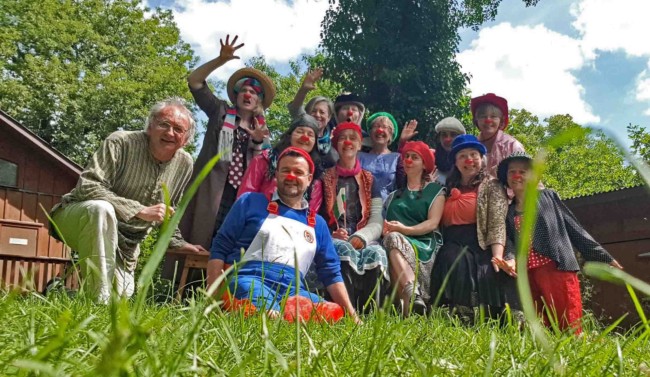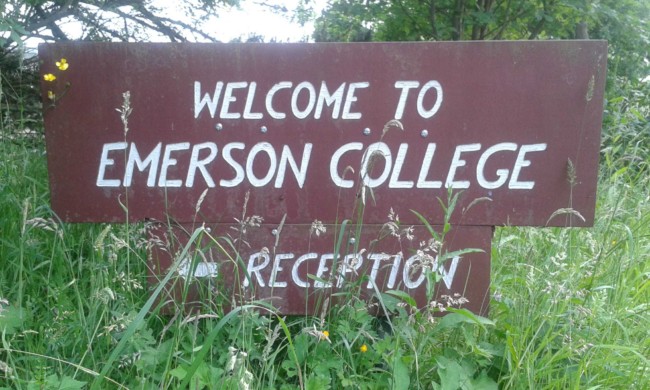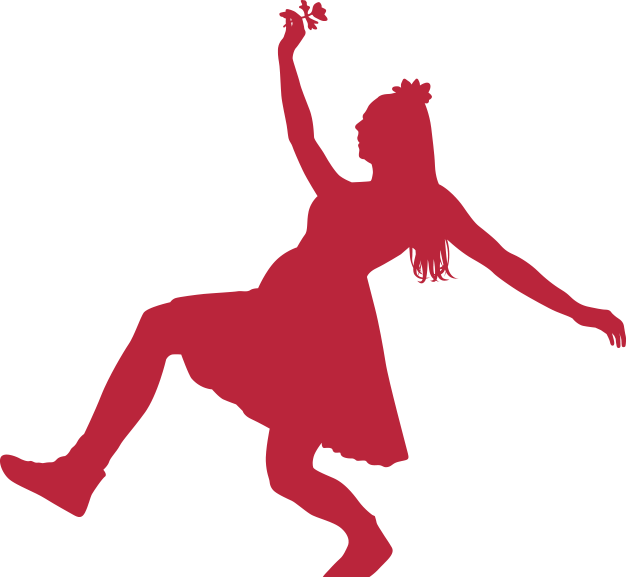The Inner Teacher
Jun 18 2018

Last week, feeling the desire to experience a bit of what I teach, I attended a week-long residential clowning and clearing retreat, entitled “The Inner Teacher.” Two incredibly experienced facilitators wove their practices together to offer a phenominal group journey which posed the question; “How do I bring the playfulness and lightness of the clown into my own life and work as a leader, teacher, human being?” (from course description)
The course was held in Emerson College, a wondrous centre for spiritual, social and practical adult education set in the lushious Sussex countryside. The grounds are lovingly tended and the meals are delicious and nutritious, presented with care and attention.

The morning sessions were led by Vivian Gladwell, founder of Nose to Nose, a company which provides clown workshops for adults and training for clown facilitators who share what they've learned over the world. Vivian “holds clowning as a social playground for exploring our humanity.” (Nose to Nose website)
I experienced Vivian's teaching as simple yet profound. It seems the centre of the practice is cultivating the relaxation that allows deep listening. Listening deeply to ourselves, to our partners on stage and to the audience. With Vivian's gentle coaching, we developed the ability to hear and the confidence to take risks to act on our inner impulses and share ourselves with each other.
In one improvisation, I “set fire” to the whole room and everything in it. This all stemmed from listening to the audience's response, as I stood near a heater, wearing a nylon tutu. One member of the audience let me know that she was anxious that I was too close to the fire and so the game of “what if...?” began. Without words, I enacted the scene: What if my skirt caught fire and I rolled on the rug to put it out, but the rug caught fire, and the bench that's near it and then the rope that's denoting the front of the stage and [looking around] oh, a fire extinguisher, phew, oh no, even that's caught fire and all the tiny clay figures in the cabinet, they all burn one by one, this one like this, this one like that, the next like this...

In the midst of this, my partner arrived on stage. When I noticed her, she seemed frightened, so I took it upon myself to keep her safe, slipping into a serious fire-safety officer kind of character. I demonstrated all the ways she might accidentally cause a fire, through causing friction by shuffling about in the chair, or rolling about on the “safe looking” cushion, or perhaps the sun would come through the window and set light to the white-board... Each idea escalated from the last, causing my partner increasing amounts of distress, until she collapsed in a little ball, wailing; “Is nothing safe?”
At this moment, I felt a shift. I realised I'd taken it too far. So I tried to make amends by handing her various objects, but of course, she still had the memory of everything setting on fire, so she shrieked every time I tried to hand her anything, that became our game.
Finally, I came across a soft, velvet rose, which I declared to be “Perfectly safe.” After a bit of persuasion, my partner accepted my gift. But of course, just at the moment of relaxation, the rose caught fire!
I had an extraordinary amount of pleasure, reacting to the audiences response, doing more of what they were enjoying, finding variations to keep the laughter bubbling and my partner's “fear” just kept fanning the flames.

The afternoon sessions were led by founding facilitator and mentor for the National Center for Courage and Renewal, Penny Williamson. Penny has an incredible amount of experience in training leaders and organizations in health care. She shared with us the Circle Of Trust approach, with the intention to support us to “create a safe space for reflection and meaningful conversations to make deeper sense of what we are experiencing in clowning” (from course description)
One of the most powerful exercises Penny shared with us was the Clearness Committee. After agreeing to the boundaries of the exercise (which are absolutely crucial to making this work safe and effective), we sat in groups of three, each bringing an issue that we'd like support to unpack. Each person had 40 minutes to explore their chosen issue. For the first part, the speaker has space to share whatever they want to about the issue and its context whilst the other two listen in silence. After a time, the listeners can pose honest, open questions to help the speaker dive deeper into their reflections.
Honest, open questions are deceptively simple, Penny's notes explain; “The best single mark of an honest, open question is that the questioner could not possibly anticipate the answer to it.” They're not about offering thinly disguised advice (“do you think if you tried....?”) and they're not about trying to find a solution (“don't you think it might be because....?”), they are questions designed to help the speaker access their own inner wisdom. Penny's notes offer this handy tip; “If you feel the subtle pull of hoping for a certain answer to a question – it's probably not open and honest!”
Through the honest, open questions I found connections between themes in my life that I'd never understood before, my 40 minutes was a dance between my strength and my vulnerability, safety and risk, the known and the unknown, fear and love. Just seeing how all these parts of me dance together, and to have this dance witnessed compassionately, without anyone judging me or trying to fix me, was incredibly powerful.

In both the clowning and circle of trust practices, it seems to me the power is in our quality of attention. Through listening to myself, my partner and the audience while I'm on stage, I can make offers that will satisfy and play what needs to be played. Through listening deeply to others and asking honest, open questions, I can support them to be the masters of their own destiny. And the key to all of this? Letting go! And the key to letting go?
Here's Sharon Salzberg, from her book Real Love, The Art of Mindful Connection, something I just happened to be reading last week:
“The key to letting go is practice. Each time we let go, we disentangle ourselves from our expectations and begin to experience things as they are. We can be with. We can show ourselves repeatedly that letting go is actually a healthy foundation upon which we can open up to real love- to giving, receiving, and experiencing it authentically and organically.”
I'm extremely grateful to Vivian and Penny for their exquisite holding of the space, which allowed me to experience the power of listening and letting go in action. I'm grateful to the staff and volunteers of Emerson College for creating and maintaining the outer holding space and I'm grateful to my new clown friends for sharing themselves with me and for accepting me as I am. I feel fully nourished and ready to throw myself back into developing my version of this dream-like experience for others.



